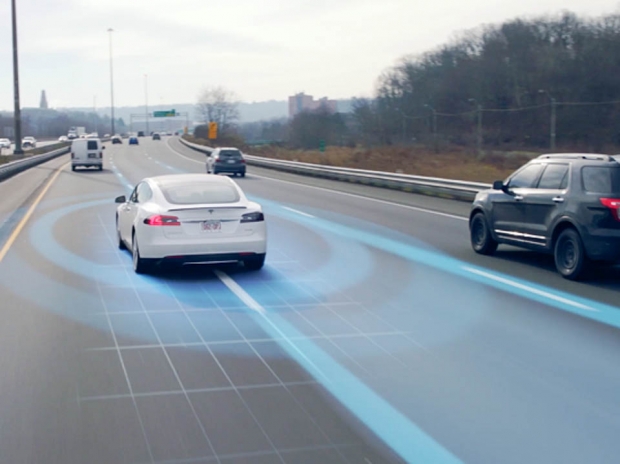In a turn of events on Tuesday, the company’s Autopilot system has been attributed to possibly saving a Norwegian family from a high-speed collision with multiple other vehicles.
Frank van Hoesel was driving home from a family vacation in Belgium when his Tesla Model X issued a warning before the car ahead of him had hit its brakes. Without any manual assistance, the vehicle began slowing down as he witnessed an SUV in front of him hit the center barrier and flip several times. The video can be found here.
"When it happened, when the other cars started hitting the brakes, I also started hitting the brakes, Hoesel told NBC News. "But then the car already was almost stopped. The car was quicker than I was," he said.
When Tesla rolled out the Autopilot version 8.0 software update to its customers in September, it gave them a new radar processing capability for the system to visualize and track up to two cars ahead of itself on the road. The vehicle’s object detection system works by bouncing radio waves underneath and around the vehicles in front of it where a driver is potentially unable to see because of an obstructed view.
In the video, the Forward Collision Warning alert can be heard before the vehicle applied the brake, indicating that the Autopilot was able to detect two cars ahead of it. Five people sustained minor injuries following the accident.
Tesla Autopilot collision incidents
The first known crash in a Tesla vehicle took place in January, when a Model S owner in Hong Kong was hit by a street sweeper truck on the side of the road at highway speed. Although Autopilot was engaged, the vehicle did not slow down or apply its brakes before hitting the truck.
A second and more widely publicized crash occurred in June involving another Model S on Autopilot, when the vehicle’s cameras and radar system could not detect an oncoming tractor-trailor against a brightly lit sky and did not apply its brakes. Following investigation, however, Tesla later told members of the Senate Commerce Committee that the problem was not related to Autopilot, but rather to the car’s automatic braking system.
A third crash occurred in Pennsylvania on July 1st, when a Model X hit a guard rail and then a concrete median before rolling over and coming to rest in the middle lane. Tesla later evaluated the vehicle’s data logs and concluded that the Autopilot feature was in use periodically throughout the 50-minute trip, but was disabled when the crash occurred. However, sources claim that the vehicle’s Autopilot system does run in the background - even when not in use - in order to collect data and improve the system.
In the US, the National Highway Traffic Safety Administration chief Mark Rosekind said back in July that the agency still remains optimistic in its mission to improve driver safety through new technologies such as Autopilot. It is currently working on guidelines for safely deploying automated vehicles in a variety of conditions, indicating that self-driving vehicles must be “much safer” than human drivers before being deployed on US roads.




